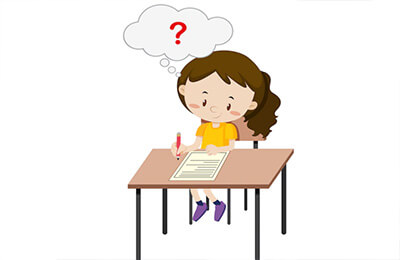例谈反意疑问句构成中遵循的三个原则
时间:2022-09-09 01:09:42

反意疑问句,是指当提问的人对前面所叙述的事实不敢肯定,而需要向对方加以证实时所提出的问句。它通常由一个陈述句加上一个简略问句两大部分构成,简略问句前面有逗号,后面有问号。完成后一部分简短问句时,要根据前面陈述句的动词时态和人称来选择适当的动词进行提问。简略问句多由情态动词、系动词be或助动词加主语构成。一般而言,根据语气结构将反意疑问句分为以下四种形式:
肯定陈述句+否定的反意疑问句:It is cold,isn’t it?
否定的陈述句+肯定的疑问句:It isn’t cold,is it?
肯定陈述句+肯定的疑问句:It is cold,is it?
否定的陈述句+否定的反意疑问句It isn’t cold,isn’t it?
其中后两种形式仅在特定的语境中表示感彩,经常见于口语会话,这里不作讲解,前两种在中学英语教学中占有重要地位。为帮助广大中学生加深对其的理解和运用,笔者结合新课课程标准和自己的教学经验,归纳总结出反意疑问句构成中应遵循的三个基本原则。
一、主语一致原则
在反意疑问句中,它的主语常常与陈述部分的主语在人称和数上保持一致,并且要用代词。例如:
Tom goes to school from Monday to Friday,doesn’t he?
They didn’t have lunch at school yesterday,did they?
陈述部分的主语是下列形式时,就要选用适当的代词作主语。
①若陈述部分的主语是everything,nothing,anything,something等不定代词或单数形式的指示代词this,that时,附加成分的主语一般用it。例如:
Everything is ready,isn’t it?
This is a book,isn’t it?
That dress is a bit small for me,isn’t it?
②若陈述部分的主语是somebody,everybody,anybody,nobody,someone,anyone,no one,none,neither等不定代词时,附加成分的主语一般用they,有时也用he。例如:
Everyone in our class wants to help Jenny with her Chinese,don’t they?/doesn’t he?
No one knows him,do they?
Someone stole his wallet on the bus,didn’t they?
③若陈述部分的主语含有复数形式的指示代词these或those时,附加成分的主语用they。例如:
These are chairs,aren’t they?
Those apples are hers,aren’t they?
④若陈述部分是动词不定式、动名词、从句或词组构成的主语时,问句的主语用it。例如:
To learn English well isn’t easy,is it?
Doing morning exercises has helped her improve her health,hasn’t it?
What he said is true,isn’t it?(不用didn’t he?)
Where we will build the library has not been decided yet,has it?(不用won’t we?)
“united” means “together”,doesn’t it?
⑤ 当陈述句主语是不定代词one时,反意问句的主语可用one,也可用you(但美式英语用he)。例如:
One should obey the rules of traffic,shouldn’t one/you/he?(每个人都应该遵守交通规则,不是吗?)
⑥neither...nor...,both...and...,not only...but also...,either...or...,not...but...,...or...,...and...等连接的并列主语,改为相应的复数代词。例如:
Neither you nor I am wrong,are we?(neither...nor...为否定结构,故附加部分用肯定形式。)
Both Tom and Jack came,didn’t they?
二、谓语一致原则
通常反意疑问句的谓语要与陈述部分的谓语在时态和形式上保持一致。附加问句中动词的选取,对许多学生来说是个难点。如何才能准确地选取附加部分的动词呢?
首先,如果陈述句谓语为“情态动词/助动词+实意动词”时,疑问部分要重复这个情态动词或助动词。例如:
They can speak Spanish,can’t they?
The twin brothers couldn’t drive a car,could they?
You won’t go swimming tomorrow,will you?
He was cooking dinner at 6:00 yesterday,wasn’t he?(这里was是助动词)
The Smith family have been in Shanghai for three years,haven’t they?
They had finished their homework before they played games,hadn’t they?
其次,陈述部分中不含情态动词或助动词,而是系动词be的某种形式(如am,is,are,was,were等)时,就仍用这个be。例如:
She is a pretty girl,isn’t she?
They were all happy last night,weren’t they?
最后,若陈述部分的谓语是实义动词的某种形式,应选取一个恰当的助动词,常见的助动词有be(am,is,are,was,were,been );do(do,does,did);have(have,has,had);shall,will,would,should等。例如:
Tom usually plays soccer on weekends,doesn’t he?
He spent all his money in the supermarket,didn’t he?
另外,当陈述部分中谓语含有下列情态动词时,应根据具体情况来决定。
①当陈述部分中谓语含有情态动词have to/has to/had to时,附加成分的助动词分别用do/does/did。例如:
They had to walk home yesterday afternoon,didn’t they?
②当陈述部分中含有情态动词had better时, 附加成分的动词用had。例如:
You’d better get up early,hadn’t you?
We’d better not play in the street,had we?
③当陈述部分中是would rather +v.或would like to +v.时,疑问部分用wouldn’t +主语。例如:
He would rather stay at home than go out,wouldn’t he?
You’d like to go with me,wouldn’t you?
④当陈述部分中谓语含有边缘情态动词used to时,附加成分的谓语动词有两种形式:usedn’t +人称代词或didn’t+人称代词。例如:
She used to study in Russia,usedn’t /didn’t she?
⑤当陈述部分中含有ought to时,附加成分的动词用oughtn’t或shouldn’t。例如:
She ought to be in New York by now,oughtn’t/shouldn’t she?
⑥当陈述句部分含有情态动词must时,反意疑问部分有四种情况:
(1)must表示“不准、禁止”时,反意疑问部分要用must (mustn’t)。例如:
You mustn’t stop your car here,must you?你不准把车停在这地方,知道吗?
(2)must表示“必须”时,反意疑问句部分要用needn’t。例如:
They must finish the work today,needn’t they?他们今天必须要完成这项工作,是吗?
(3)当must用来表示对现在的情况进行“推测”时,反意疑问部分要根据must后面的动词采用相应的形式。例如:
He must be good at maths,isn’t he?他数学一定学得很好,是吗?
(4)当must用来表示对过去的情况进行“推测”(must + have done)时,如果是强调对过去情况的推测(一般句中有明确的过去时间状语)时,问句要根据陈述部分谓语的情况用“didn’t+主语”或“wasn’t/weren’t+主语”结构;如果强调动作的完成(一般没有明确的过去时间状语)时,问句要用“haven’t/hasn’t+主语”。例如:
She must have read the novel last week,didn’t she?她上星期一定读了这本小说了,是吗?
They have been in the office last night,weren’t they?昨晚他们一定是在办公室,是吗?
You must have told her about it,haven’t you?你一定把这事告诉她了,是吗?
三、语气相反原则
一般情况下,如果陈述部分是肯定形式,附加成分就用否定形式;反之,如果陈述部分是否定形式,附加成分就用肯定形式,即“前肯后否,前否后肯”。例如:
I didn’t do that,did I?
They have had lunch already,haven’t they?
需要特别注意的是:
①若陈述部分含有no,no one,nobody,nothing,little,few,never,hardly,seldom等表示否定意义的词时,附加成分就用肯定形式。例如:
He knows little French,does he?
There are few apples on the tree,are there?
She can hardly read,can she?
He was never late for school last term,was he ?
如果陈述句部分谓语中含有带否定意义前缀dis-,un-,im-或后缀-less等的词(如dislike,discourage,be unfair,untrue,unable等)时,仍视作肯定句,其反问部分要用否定形式。例如:
The man is dishonest,isn’t he?
Tom dislikes some bread for supper,doesn’t he?
He looked unhappy today,didn’t he?
He was unhappy today,wasn’t he?
The patient is unable to move round,isn’t he?
It is impossible to master a foreign language in two or three days,isn’t it?
除了以上常见的一些反意疑问句遵循上面三个原则外,我们还需要记住下面这些特殊形式的反意疑问句。
①当陈述部分是“There(Here)+ be + 主语”句型时,反问部分用“be +there(here)”。例如:
There isn’t any milk in the cup,is there?
Here is a book on gardening,isn’t here?
②当陈述部分是“I am...”时,问句部分习惯上用aren’t I;如陈述句部分的主语是I am not时,反问部分通常要用am I。例如:
I’m late for the meeting,aren’t I?
I’m not doing well,am I?
③当陈述部分是主从复合句时,一般来说,附加成分的主语和谓语要与主句的主语和谓语在人称和时态上保持一致。例如:
She said Tom had finished the work,didn’t she?
We believe he will come soon,don’t we?
We think English is very useful,don’t we?
He will let me go in if I show him my ticket,won’t he?
I thought he was a teacher,didn’t I?
I didn’t think he was happy,did I?
注意:
如果陈述部分是I(don’t)think/ suppose/ believe/ suggest/ guess/ imagine / expect/ am afraid/ am sure等后跟that引导的宾语从句时,附加部分的主语和谓语动词要与宾语从句中的主语和谓语动词保持一致,而且当主句含有don’t时,还应注意宾语从句的否定转移。例如:
I think she takes good care of the dog,doesn’t she?
I don’t think she takes good care of the dog,does she?
I suppose I had better go at once,hadn’t I?
I don’t suppose that he cares,does he?
I’m sure Vera has said something to you since she met you,hasn’t she?
④let’s引导的祈使句,其问句一般用shall we。例如:
Let’s start early,shall we?
⑤由动词原形或let us(此处不包含缩略形式的let’s)引导的祈使句,其附加成分表示请求时一般用will you,表示委婉请求或邀请时用won’t you,但在否定的祈使句后面只能用肯定形式的will you。例如:
You feed the bird today,will you?
Please open the window,won’t / will you?
Don’t talk in the reading-room,will you?
Let us go swimming now,will /won’t you?
⑥感叹句的附加问句,疑问部分用be +主语,并且要用否定结构。例如:
What beautiful flowers,aren’t they?多漂亮的花呀,不是吗?
What a clever girl,isn’t she?多聪明的女孩,不是吗?
⑦当陈述部分的谓语动词是表示愿望的wish时,反意疑问部分要用may+主语,而且前后两个部分均用肯定式。例如:
I wish to visit America,may I?我想去美国旅行,行吗?
I wish to go to the moon by spaceship some day,may I?我希望某一天能乘宇宙飞船去月球,可以吗?
由于反意疑问句的陈述句部分可能涉及不同的语法现象,其反问部分就相应有较多变化。但是只要依据以上的三个原则,认真分析,勤于练习,在平常学习中多注意积累运用,这样就能以不变应万变,真正掌握好反意疑问句。